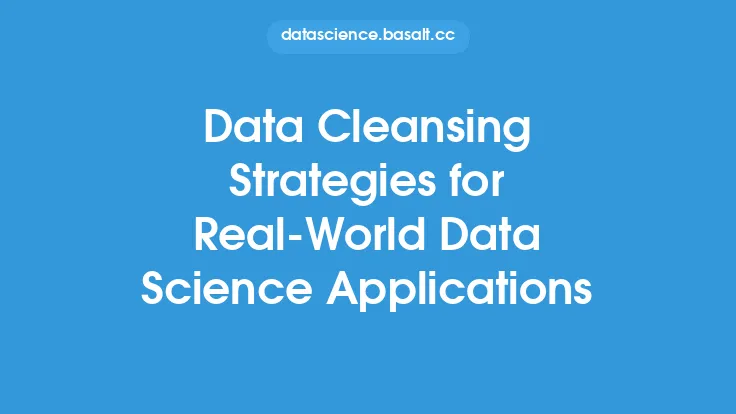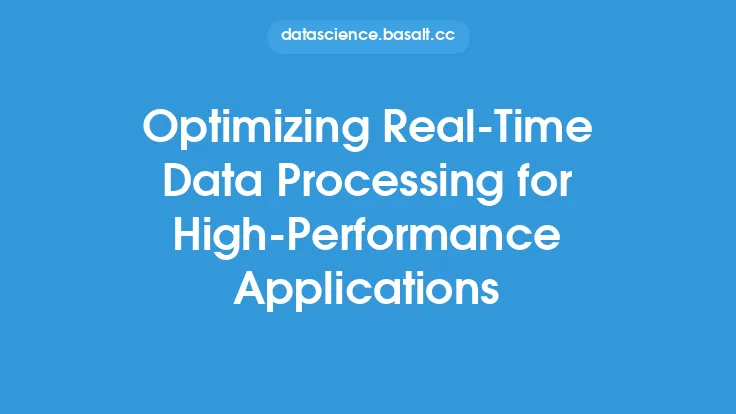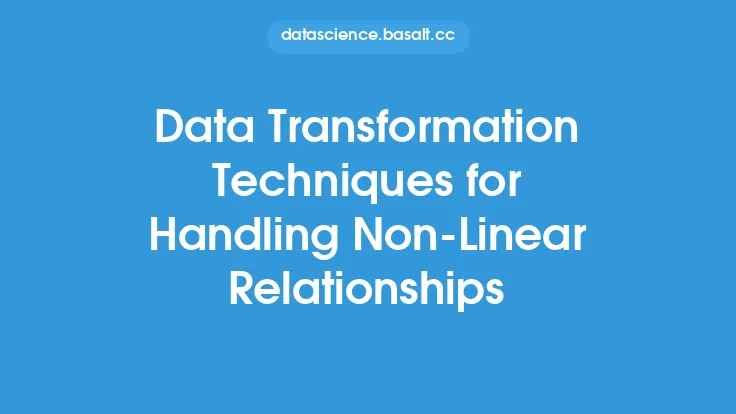Data transformation is a critical step in the data mining process, as it enables the conversion of raw data into a format that can be easily analyzed and interpreted. In real-world applications, data transformation strategies play a vital role in extracting insights and meaningful patterns from complex data sets. The goal of data transformation is to transform the data into a suitable format for analysis, modeling, and visualization, while minimizing the loss of information and preserving the underlying relationships between variables.
Introduction to Data Transformation Strategies
Data transformation strategies involve a series of techniques and methods that are used to convert raw data into a transformed data set. These strategies can be broadly categorized into two main types: feature transformation and data normalization. Feature transformation involves transforming the existing features or variables in the data set, while data normalization involves scaling the data to a common range to prevent differences in scales from affecting the analysis. The choice of data transformation strategy depends on the nature of the data, the goals of the analysis, and the requirements of the modeling or machine learning algorithm.
Types of Data Transformation
There are several types of data transformation techniques that can be used in real-world applications, including:
- Log transformation: This involves taking the logarithm of the data to reduce skewness and stabilize the variance.
- Standardization: This involves subtracting the mean and dividing by the standard deviation to scale the data to a common range.
- Normalization: This involves scaling the data to a common range, usually between 0 and 1, to prevent differences in scales from affecting the analysis.
- Feature scaling: This involves scaling the data to a common range, usually between -1 and 1, to improve the stability and performance of machine learning algorithms.
- Encoding: This involves converting categorical variables into numerical variables using techniques such as one-hot encoding or label encoding.
- Aggregation: This involves combining multiple variables into a single variable using techniques such as sum, mean, or median.
Data Transformation Techniques for Handling Missing Values
Missing values are a common problem in real-world data sets, and can significantly affect the accuracy and reliability of the analysis. There are several data transformation techniques that can be used to handle missing values, including:
- Listwise deletion: This involves deleting the entire row or observation if any of the variables are missing.
- Pairwise deletion: This involves deleting only the specific variable that is missing, and using the remaining variables for analysis.
- Mean or median imputation: This involves replacing the missing value with the mean or median of the variable.
- Regression imputation: This involves using a regression model to predict the missing value based on the other variables in the data set.
- K-nearest neighbors imputation: This involves using the k-nearest neighbors algorithm to predict the missing value based on the similarity between observations.
Data Transformation for Time Series Data
Time series data is a type of data that is collected over time, and can be used to forecast future trends and patterns. There are several data transformation techniques that can be used to transform time series data, including:
- Differencing: This involves subtracting each value from the previous value to make the data stationary.
- Log transformation: This involves taking the logarithm of the data to reduce skewness and stabilize the variance.
- Seasonal decomposition: This involves decomposing the data into trend, seasonal, and residual components to identify patterns and anomalies.
- Time series normalization: This involves scaling the data to a common range to prevent differences in scales from affecting the analysis.
Data Transformation for Text Data
Text data is a type of data that is collected in the form of text, and can be used to extract insights and meaningful patterns using techniques such as natural language processing and text mining. There are several data transformation techniques that can be used to transform text data, including:
- Tokenization: This involves breaking down the text into individual words or tokens.
- Stopword removal: This involves removing common words such as "the", "and", etc. that do not add much value to the analysis.
- Stemming or lemmatization: This involves reducing words to their base form to reduce dimensionality and improve analysis.
- Vectorization: This involves converting the text data into numerical vectors using techniques such as bag-of-words or term frequency-inverse document frequency (TF-IDF).
Best Practices for Data Transformation
Data transformation is a critical step in the data mining process, and requires careful consideration of the goals of the analysis, the nature of the data, and the requirements of the modeling or machine learning algorithm. Some best practices for data transformation include:
- Understand the data: Before transforming the data, it is essential to understand the distribution, relationships, and patterns in the data.
- Choose the right technique: The choice of data transformation technique depends on the nature of the data, the goals of the analysis, and the requirements of the modeling or machine learning algorithm.
- Evaluate the results: After transforming the data, it is essential to evaluate the results to ensure that the transformation has achieved the desired goals.
- Document the process: It is essential to document the data transformation process to ensure reproducibility and transparency.
Conclusion
Data transformation is a critical step in the data mining process, and requires careful consideration of the goals of the analysis, the nature of the data, and the requirements of the modeling or machine learning algorithm. By understanding the different types of data transformation techniques, and following best practices for data transformation, data analysts and scientists can extract insights and meaningful patterns from complex data sets, and make informed decisions to drive business success.





